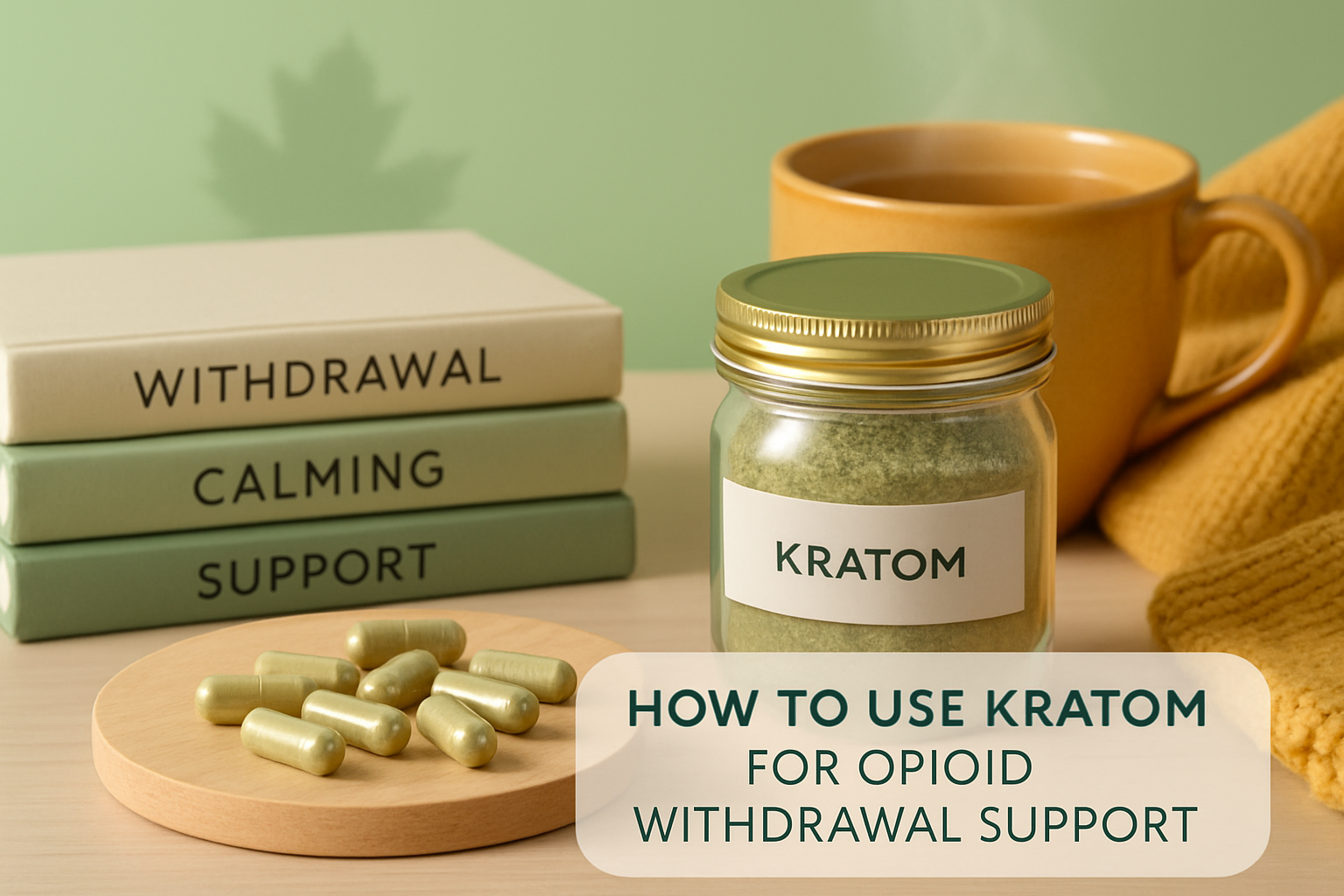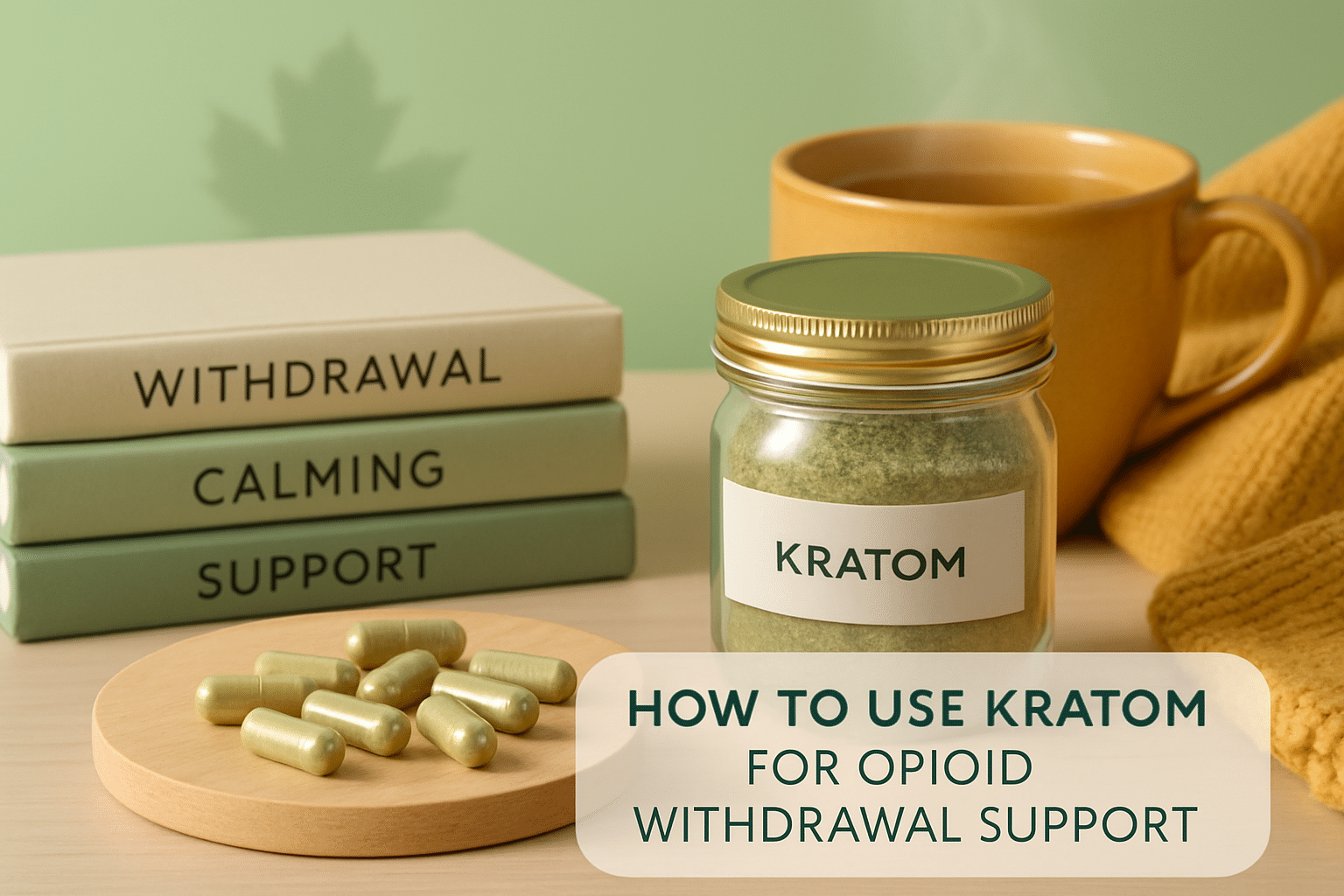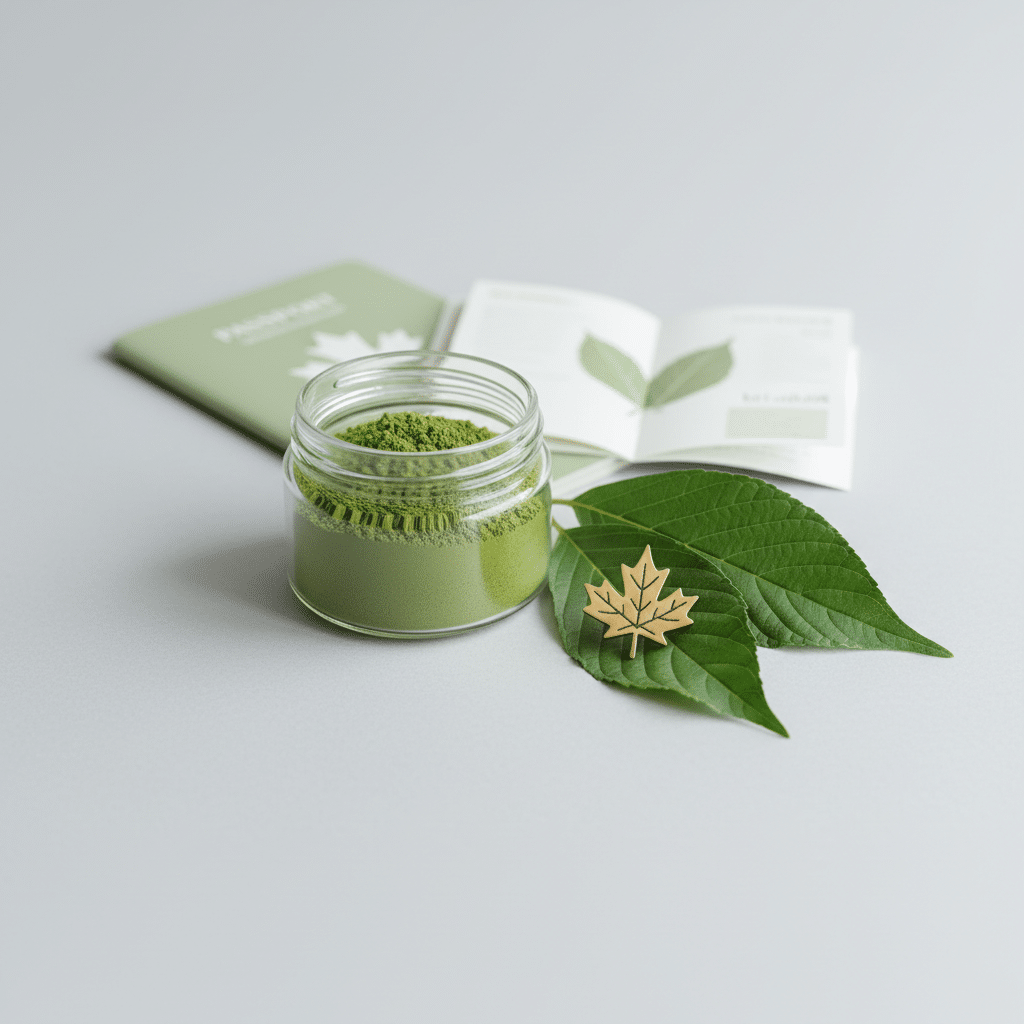
Managing withdrawal symptoms from opioid dependence represents one of the most challenging aspects of recovery. While traditional medical approaches remain essential, emerging research suggests that kratom, a tropical plant from Southeast Asia, may offer additional support during this difficult period. 10.3% of people with opioid use disorder report using kratom, signaling growing interest in this botanical option among those seeking recovery alternatives.
The complex process of opioid withdrawal involves multiple neurochemical pathways, creating physical and psychological symptoms that can last for weeks. Understanding how different approaches, including kratom for opioid withdrawal, might provide relief has become increasingly important for those exploring comprehensive recovery strategies in Canada.
Understanding How Kratom Works for Withdrawal Support
Kratom’s Alkaloid Profile and Opioid Receptor Interaction
The science behind kratom’s potential effectiveness lies in its unique alkaloid composition, primarily mitragynine and 7-hydroxymitragynine. These compounds interact with opioid receptors differently than traditional opioids, potentially offering relief without the same level of dependency risk.
Research reveals that kratom’s alkaloids show four distinct pharmacological actions: analgesic, stimulant, mood-enhancing, and anti-anxiety effects through adrenergic and serotonergic pathways. This multi-pathway approach means kratom doesn’t simply replace one opioid with another—it works through several mechanisms simultaneously.
The complexity of these interactions suggests why some individuals find kratom helpful during kratom opioid withdrawal protocol implementation. Unlike full opioid agonists, kratom’s partial agonist activity may provide symptom relief while reducing the risk of severe dependence development.
Why Kratom May Help Manage Withdrawal Symptoms
Traditional withdrawal symptoms include muscle aches, anxiety, insomnia, nausea, and intense cravings. The multi-receptor activity of kratom may address several of these symptoms simultaneously, making it an appealing option for those seeking natural withdrawal support.
Preclinical studies demonstrate kratom reduces naloxone-precipitated withdrawal symptoms in morphine-dependent rodents, showing efficacy at low doses without respiratory depression. This safety profile differs significantly from traditional opioids, which pose serious respiratory risks.
The stimulating properties of certain kratom strains may help combat the fatigue and depression commonly experienced during withdrawal. Meanwhile, the analgesic effects can address physical discomfort, and the mood-stabilizing properties may reduce anxiety and emotional volatility.
Scientific Research on Kratom and Opioid Dependence
Current research into kratom for opioid withdrawal symptoms continues expanding, with studies examining both efficacy and safety profiles. The growing body of evidence suggests potential benefits, though researchers emphasize the need for standardized products and dosing protocols.
Population studies indicate significant real-world usage among those with opioid experience. Research shows that 10.3% of people with opioid use disorder report kratom use, signaling potential harm reduction applications among opioid-experienced populations.
This usage pattern suggests many individuals are self-medicating with kratom during withdrawal periods. However, the lack of standardized dosing guidelines means people often experiment with different kratom dosage opioid withdrawal protocols without professional guidance.
Different Kratom Strains for Withdrawal Management
Red Vein Strains for Pain and Sleep
Red vein kratom strains typically offer the strongest analgesic and sedating effects, making them popular choices for managing withdrawal-related pain and sleep disturbances. These strains may help address the physical discomfort that often prevents people from resting during early recovery.
The calming properties of red strains can be particularly beneficial during evening hours when anxiety and restlessness peak. Many users report improved sleep quality, which is crucial for the body’s natural healing processes during withdrawal.
However, timing becomes important with red strains. Using them too early in the day might cause excessive sedation, while evening use may promote the restorative sleep needed for recovery.
Green and White Strains for Energy and Mood
Green and white vein strains offer more stimulating effects, potentially countering the fatigue and motivational issues common during withdrawal. These strains may help maintain daily functioning while managing withdrawal symptoms.
The mood-lifting properties of these strains can address the depression and anxiety that often accompany opioid withdrawal. White strains, in particular, may provide energy boosts that help people maintain work and social commitments during recovery.
Combining different strains throughout the day—energizing varieties in the morning and relaxing ones in the evening—represents a common approach among those using kratom opioid withdrawal Canada protocols.
Safety Considerations and Quality Standards in Canada
Understanding Kratom’s Legal Status and Regulations
Currently, kratom remains legal for purchase and possession in Canada, though it cannot be sold as a health product or for human consumption. This regulatory gray area means products are typically marketed for research, aromatherapy, or botanical examination purposes.
The lack of specific kratom regulations means consumers must rely on manufacturers’ quality standards rather than government oversight. This situation makes choosing reputable suppliers with comprehensive testing protocols essential for safety.
Canadian consumers should stay informed about potential regulatory changes, as health authorities continue reviewing kratom’s status. Understanding current legal boundaries helps ensure compliance while accessing these botanical products.
Choosing Lab-Tested Kratom Products
Quality testing becomes crucial when selecting kratom products, especially for those dealing with withdrawal symptoms who may be particularly sensitive to contaminants or adulterants. Comprehensive lab testing should screen for heavy metals, pesticides, bacteria, and alkaloid content.
University of Florida researchers emphasize lyophilized kratom tea (LKT) shows no physical dependence in animals after repeated administration. This research highlights how product preparation methods can influence safety profiles.
Reputable suppliers provide certificates of analysis (COAs) for each batch, detailing purity levels and alkaloid concentrations. These documents help consumers make informed decisions about product quality and potency.
Recognizing When to Seek Professional Medical Help
While kratom may offer withdrawal support, certain situations require immediate medical attention. Severe dehydration, extreme blood pressure changes, seizures, or thoughts of self-harm warrant emergency care regardless of any botanical interventions being used.
Frontier studies note kratom may reduce cravings for stimulants and alcohol alongside opioids, suggesting complex interaction risks. This complexity underscores the importance of medical supervision, especially for those with multiple substance dependencies.
Professional medical support becomes particularly important for individuals with co-occurring mental health conditions, chronic medical issues, or those taking multiple medications. Healthcare providers can monitor progress and adjust treatment plans as needed.
Kratom Dosage and Timing for Withdrawal Support
Starting with Conservative Doses
Beginning with low doses allows individuals to assess their response to kratom while minimizing the risk of adverse effects. Most experienced users recommend starting with 1-2 grams and waiting at least 45 minutes before considering additional amounts.
The variability between different kratom batches means even experienced users often start conservatively when trying new products. Individual factors like body weight, metabolism, and opioid tolerance history can significantly influence optimal dosing.
Keeping a detailed log of doses, timing, and effects helps identify patterns and establish personalized protocols. This documentation becomes valuable for adjusting approaches and communicating with healthcare providers.
|
Dosage Range |
Typical Effects |
Best Used For |
|---|---|---|
|
1-3 grams |
Mild stimulation, mood lift |
Energy, motivation |
|
3-5 grams |
Moderate pain relief, relaxation |
General withdrawal symptoms |
|
5-8 grams |
Strong sedation, significant analgesia |
Severe pain, sleep issues |
Timing Doses Around Withdrawal Symptoms
Withdrawal symptoms often follow predictable patterns, with physical symptoms typically peaking in the first few days and psychological symptoms potentially lasting weeks. Timing kratom use around these patterns may optimize effectiveness.
Morning doses of energizing strains can help combat fatigue and motivational issues, while evening doses of relaxing varieties may address sleep disturbances and evening anxiety spikes. This strategic timing approach represents common kratom withdrawal protocol natural methods.
Avoiding redosing too frequently helps prevent tolerance development and maintains kratom’s effectiveness over time. Most users find waiting at least 4-6 hours between doses provides optimal results while minimizing risks.
Frequently Asked Questions
Can kratom completely replace medical treatment for opioid withdrawal?
No, kratom should never be considered a complete replacement for professional medical care during opioid withdrawal. While some research suggests potential benefits, withdrawal can involve serious medical complications requiring professional monitoring. Kratom may serve as a complementary support tool alongside proper medical supervision.
How long should someone use kratom during withdrawal?
The duration varies significantly between individuals, but most people use kratom for a few weeks to a few months during acute withdrawal phases. Some continue occasional use for managing post-acute withdrawal symptoms. The goal should be gradually reducing dependence on any substance, including kratom, as natural healing progresses.
Are there specific kratom strains opioid detox protocols recommend?
While no official medical protocols exist, users often report success with red strains for pain and sleep issues, and green or white strains for energy and mood support. Individual responses vary significantly, so experimentation with small amounts helps determine personal preferences. Quality and consistency matter more than specific strain names.
What’s the difference between kratom and prescription medications for withdrawal?
Kratom works through multiple receptor pathways beyond just opioid receptors, potentially offering broader symptom relief. However, prescription medications undergo rigorous testing and have established dosing guidelines. Kratom’s effects are less predictable due to natural variation in alkaloid content and lack of standardization.
Is it safe to combine kratom with other withdrawal medications?
Combining kratom with other substances, including prescription medications, can create unpredictable interactions. Always consult healthcare providers before mixing kratom with any medications, especially those affecting the central nervous system. Some combinations may enhance sedation or interact with metabolic pathways in dangerous ways.
Moving Forward with Informed Decisions
The landscape of opioid withdrawal support continues evolving as research expands our understanding of various approaches, including kratom’s potential role. While early studies show promise, individual experiences vary significantly, and the absence of standardized protocols means careful personal research remains essential.
Success in managing kratom opioid withdrawal symptoms often requires combining multiple strategies—proper nutrition, exercise, social support, and potentially botanical aids like kratom. The key lies in approaching any intervention with realistic expectations and appropriate caution.
Quality becomes paramount when considering kratom products, especially during the vulnerable withdrawal period. Lab-tested products from reputable sources help ensure safety and consistency, while professional medical guidance provides essential oversight for complex medical situations.
Ready to explore lab-tested kratom options for your wellness journey? Check out 365 Kratom Canada’s collection of premium, tested botanical products designed for research and examination purposes.



